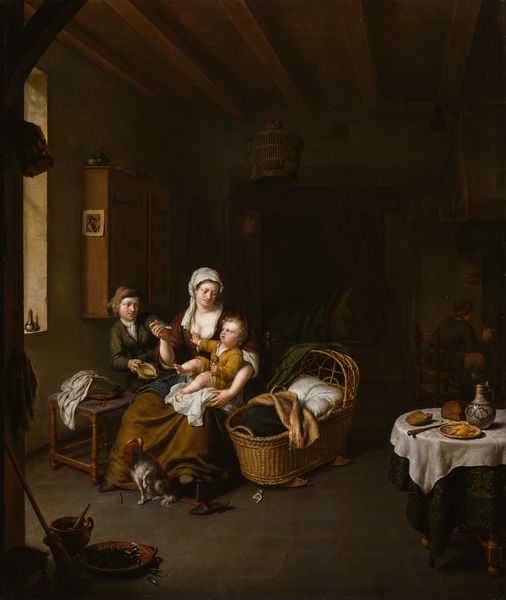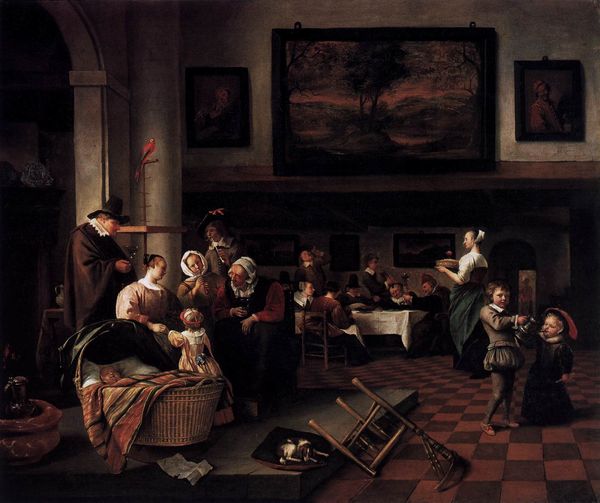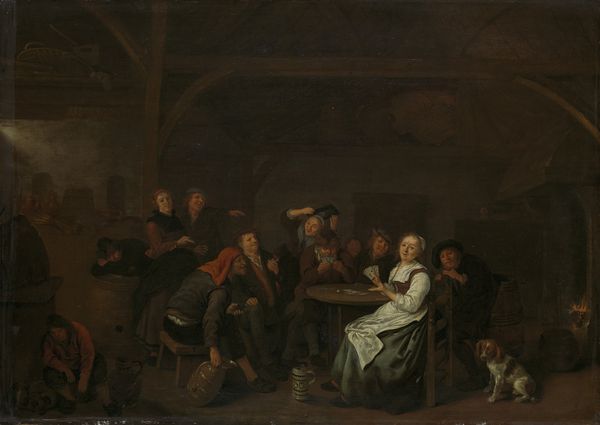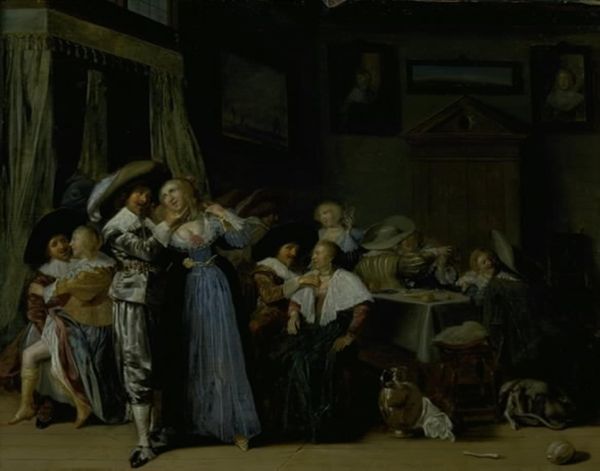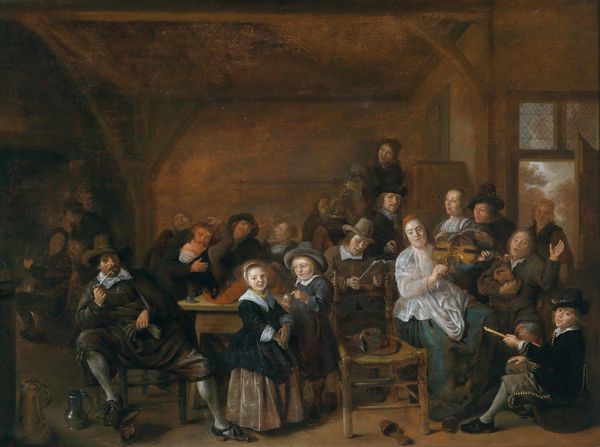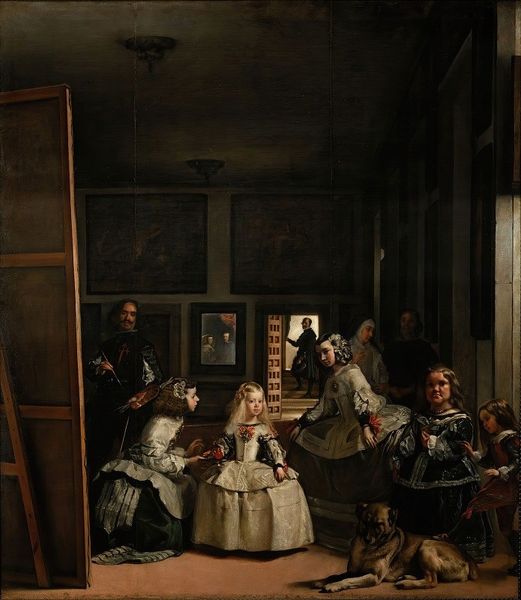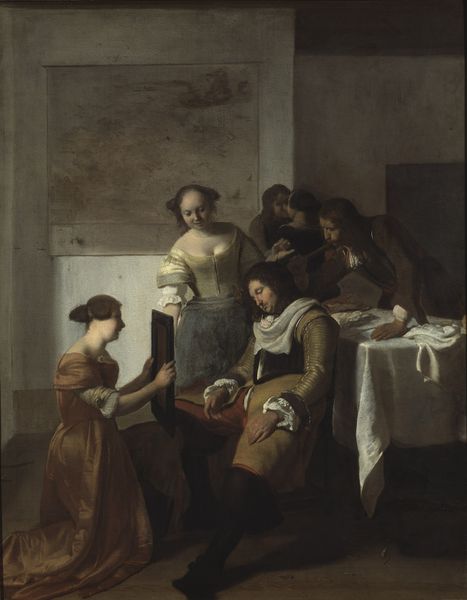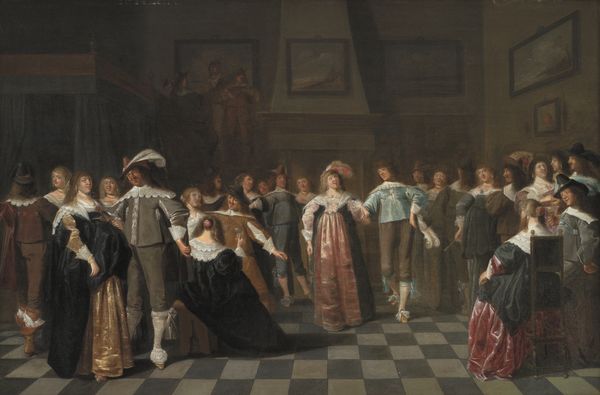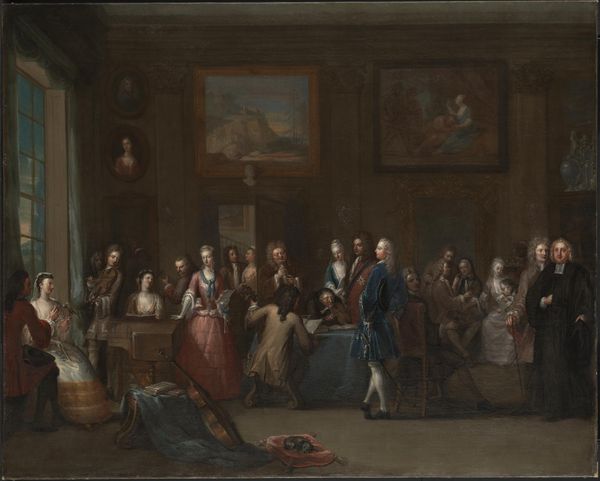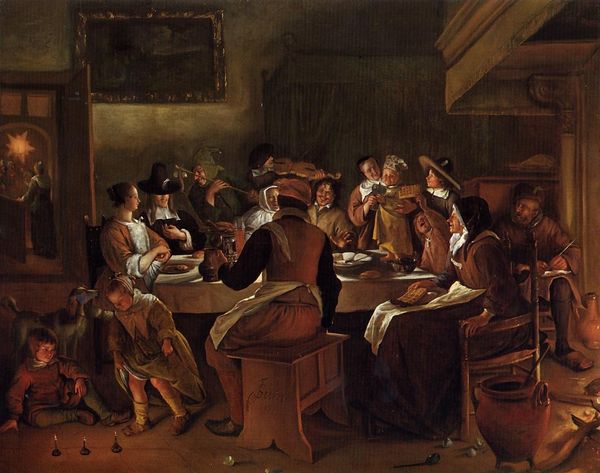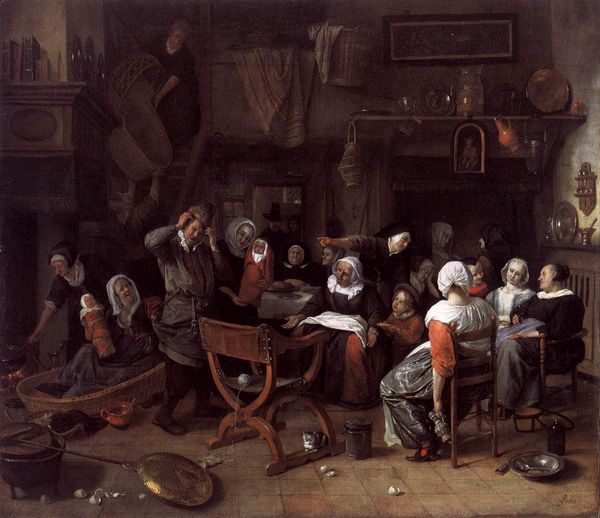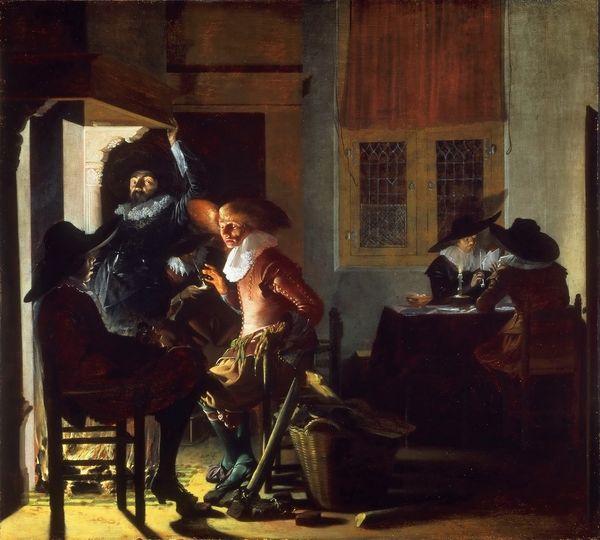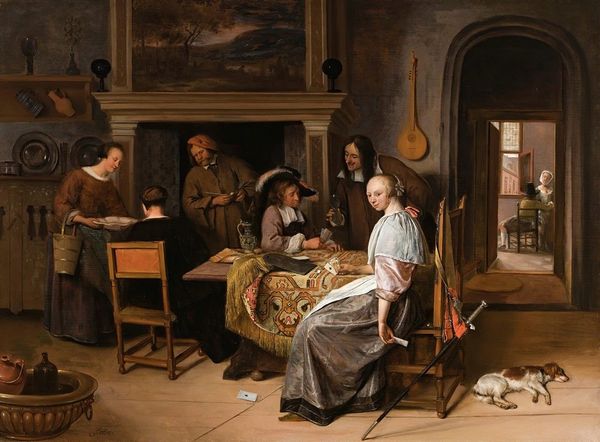
painting, oil-paint
#
conversation-piece
#
baroque
#
painting
#
oil-paint
#
genre-painting
Dimensions: height 60 cm, width 77 cm, depth 7.2 cm
Copyright: Rijks Museum: Open Domain
Curator: Immediately, I’m struck by the contrast. The room is dark, almost claustrophobic, but those bright faces clustered around the table draw the eye ineluctably. Editor: Indeed. We're looking at Jan Josef Horemans the Younger's "'The New Song," dating to about 1740-1760. It’s an oil painting depicting a social gathering, what was then known as a “conversation piece.” Curator: Conversation is right! Though it begs the question of which conversations are being represented here, beyond simply musical interpretation. I see evidence of communal pottery—bits of clay on the floor. This isn’t just aristocratic finery; there are craft practices implied. What are these folks making together? And who benefits from their labor? Editor: That's fascinating. The socio-economic status here feels nuanced, doesn't it? While there is obvious patronage – likely of the artist and definitely of the musician – there are also distinct class lines on display. How do we interpret this tension reflected through material signifiers and social conventions of the period? Curator: Consider the labor invested, then: Horemans’ painting itself, of course, but before that the canvas, the pigments… who prepared them? Who commissioned the work, and what was their vision? What part might paintings like these play in reinforcing or perhaps even subtly questioning existing social hierarchies? Editor: We also see a reflection of the baroque's cultural trends. The painting is rife with the symbolism and stylistic flourishes that reflected the era's aesthetics, right down to the fashion and architectural elements. But how were images such as these disseminated more broadly? It seems that while paintings are a luxury item for the bourgeois, tapestries and broadsheet prints made the genre more broadly accessible. Curator: Precisely. "The New Song" wasn’t viewed in a vacuum. Genre paintings gained immense popularity at the time and were increasingly consumed by wider publics in urban settings, prompting a sort of public sphere to develop around images and culture. Editor: A captivating scene. Jan Josef Horemans not only painted this work, but he and his family lived in a time that shaped our perception of community today. Curator: Indeed. There's a potent tension between the artistry we admire, the making of that piece, and what all this reveals about its social fabric. A wonderful conversation.
Comments
No comments
Be the first to comment and join the conversation on the ultimate creative platform.
